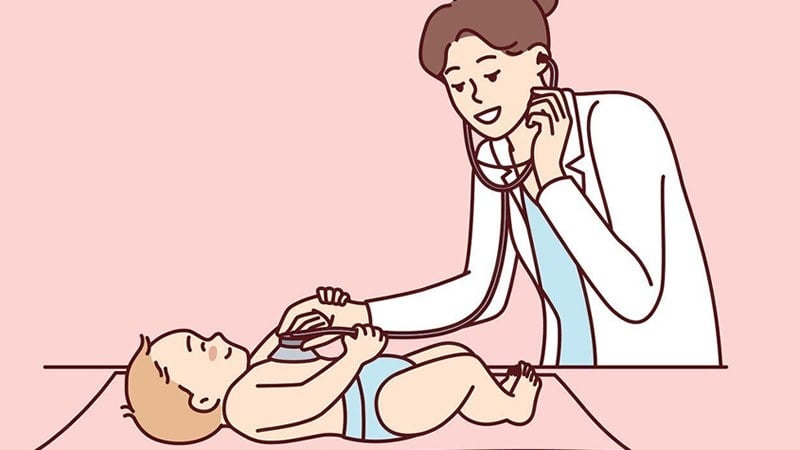Pediatric Nurse Practitioner: Job Description, Salary, And How to Become One
 Embarking on a journey to play a crucial role in promoting the health and well-being of infants, children, and adolescents, the prospect of becoming a Pediatric Nurse Practitioner (PNP) is both rewarding and impactful. Whether you’re a nursing student or a healthcare professional seeking career advancement, delve into the comprehensive details covering the job description, responsibilities, salary expectations, and steps to becoming a PNP.
Embarking on a journey to play a crucial role in promoting the health and well-being of infants, children, and adolescents, the prospect of becoming a Pediatric Nurse Practitioner (PNP) is both rewarding and impactful. Whether you’re a nursing student or a healthcare professional seeking career advancement, delve into the comprehensive details covering the job description, responsibilities, salary expectations, and steps to becoming a PNP.
PNP Job Description
Collaborating within healthcare teams, PNPs dedicate themselves to enhancing the health and well-being of infants, children, and adolescents. The pediatric realm of practice offers various fields, including acute, oncology, and primary care.

Struggling to meet your deadline?
Get your assignment on Pediatric Nurse Practitioner: Job Description, Salary, And How to Become One done by certified MDs and PhDs in the USA. ORDER NOW!
- Acute PNP:
Involves diagnosing, treating, and managing sudden and time-sensitive illnesses or injuries in children, ranging from common acute illnesses to more severe conditions requiring immediate attention. - Oncology PNP:
Focuses on the care of children and adolescents with cancer or hematological disorders. - Primary PNP:
Provides routine preventive care, manages common illnesses and chronic conditions, and promotes overall health and well-being in the pediatric population.
Within pediatrics, other specialized fields include nephrology, allergy and immunology, endocrinology, neurology, pulmonology, and more. PNPs can operate in diverse settings, such as:
- Medical office
- Hospital setting
- Neonatal Intensive Care
- Pediatric Intensive Care
- Peri-Operative
- Surgical Outpatient Services
- Community Health Clinic
The integration of telehealth in outpatient settings further facilitates medical care accessibility, especially for families in rural areas.
PNP Responsibilities
PNPs shoulder a diverse array of responsibilities, including:
1. Pediatric Assessments:
Conducting comprehensive physical examinations, developmental assessments, and health screenings to evaluate the overall health and growth of pediatric patients.
2. Diagnosing and Treating Illnesses:
Diagnosing and treating common acute and chronic illnesses in pediatric patients, including prescribing medications, therapies, and treatments.
3. Preventive Care and Health Promotion:
Administering immunizations, conducting regular check-ups, and providing health education to promote healthy lifestyles and prevent illnesses.
4. Managing Chronic Conditions:
Monitoring and managing chronic health conditions in pediatric patients, collaborating with other healthcare professionals to develop and implement comprehensive care plans.
5. Patient Education and Counseling:
Educating patients and their families on various health conditions, treatment options, and strategies for maintaining optimal health. Providing counseling on topics like nutrition, development, and behavior.
6. Collaborative Care:
Working closely with physicians, nurses, specialists, and other healthcare professionals to coordinate care, ensure effective communication, and provide holistic care for pediatric patients.
7. Family Involvement:
Engaging and involving families in the care and decision-making process, ensuring their understanding of treatment plans, medications, and potential side effects.
8. Research and Evidence-Based Practice:
Staying updated with the latest research, guidelines, and advancements in pediatric healthcare. Applying evidence-based practice to deliver high-quality and patient-centered care.
9. Advocacy:
Serving as an advocate for pediatric patients, promoting their rights and needs in healthcare settings. Advocating for improved healthcare policies and practices benefiting pediatric populations.
PNP Salary Considerations
The demand for PNPs is substantial, with the U.S. Bureau of Labor Statistics (BLS) projecting a remarkable 46% occupation growth for nurse practitioners from 2021 to 2031. While the BLS doesn’t specify the PNP specialty, the reported mean annual wage for NPs in 2022 is $124,680.
Top Paying States:
1. California: $158,130
2. New Jersey: $143,250
3. Massachusetts: $138,700
How to Become a PNP
The journey to becoming a PNP commences with graduating from an accredited nursing school and obtaining an RN license. Pursuing a graduate degree, whether a master’s (MSN) or a doctoral (DNP), takes 2 to 4 years and is considered an advanced practice degree.
PNP programs may require prior experience in pediatrics before enrollment, fostering a foundation in pediatric care and honing critical thinking skills. Accreditation for PNPs is through the American Nurse Credentialing Center (ANCC) and The Pediatric Nursing Certification Board (PNCB), each with specific requirements and renewal periods.
Additional certifications for post-graduate degrees, such as Pediatric Primary Care Nurse Practitioner Certification (PPCNP-BC) or Post-Master Neonatal Nurse Practitioner Certification, can further enhance qualifications. The Commission on Collegiate Nursing Education (CCNE) serves as a valuable resource for exploring available certifications and their offerings.

Dont wait until the last minute.
Provide your requirements and let our native nursing writers deliver your assignments ASAP.
